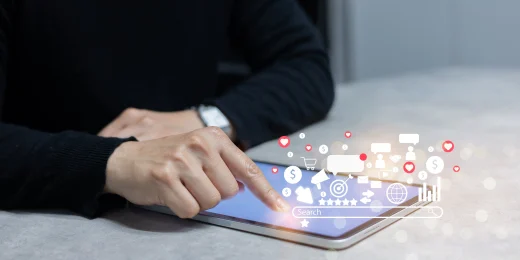E-Mail Etiquette

We’ve written about proper e-mail etiquette in the past, highlighting various ways in which you can better improve e-mail communications.
We do business with e-mail. It’s how we communicate and it’s an essential part of your image. In many cases, it’s people’s first impression of you, so it’s important to understand the basics of e-mail etiquette. In other words, it’s time to ask yourself a simple question. What are you doing wrong when sending e-mails?
CAPS
Sure, you’ll come across an instance where you are writing an e-mail and you want to emphasize a certain portion. Does that mean you should write in all caps? Does that mean you should forget the caps lock on and continue on writing? There is nothing more annoying in an e-mail than all caps. You think you’re stressing or highlighting a point with all caps, but it’s actually quite annoying and distracting. It’s also excessive because all caps sounds like you’re yelling.
Try This: What’s our alternative? You should use an exclamation point (and even then, use them sparingly), or better yet, bold what’s important to make it further stand out. It’s less in-your-face and you don’t come off as rude.
Carefully Copy
If you’re sending an e-mail out to more than one person, be careful with how you CC/BCC people. It’s important to understand the difference. CC stands for carbon copy, which means these people will receive a copy of the message and their e-mail addresses will appear in the original e-mail. BCC stands for blind carbon copy. It’s similar with the exception that e-mail addresses remain hidden – nobody will know they were included, and most importantly, if the e-mails turn into a chain of responses, those BCC’d won’t receive those notifications, which may be ideal for an executive who wants to be included on the original message, but not further correspondence.
Try This: You should ask yourself who the recipients of your e-mail are. If, for whatever reason, their e-mail should remain hidden, or the sole purpose is for them to receive a copy of the original e-mail and nothing else, make use of the BCC. There is nothing more annoying then mixing these fields up.
What’s Your Question?
We ask questions in our e-mails, and sometimes, people will reply back having ignored your questions. This can be frustrating, so don’t be that guy. In your reply, make sure you cover all your bases and reply to the questions that are asked of you. You don’t want to hit the reply button, then send a follow-up e-mail because you forgot to answer part of the e-mail.
Try This: You should carefully read your e-mail before writing a reply (and even then, write out a draft and refer back to the e-mail and see if you missed anything.
Conclusion
There is a definite art to e-mail writing. If you have multiple points you want to cover, use bullet points, bold certain sections, and make your e-mail message organized. There is no doubt that people will appreciate you for it!
Citations:
Forbes: http://www3.forbes.com/leadership/ten-e-mail-habits-that-send-wrong-message
University of Hong Kong: http://email.cityu.edu.hk/faq/ccbcc.htm
Material Disclosure: This content is for informational purposes only. ZeroParallel.com does not represent or endorse the accuracy or reliability of any of the information, content or advertisements contained on, distributed through, or linked, downloaded or accessed from any of the services contained on this website, nor the quality of any products, information or other materials displayed, purchased, or obtained by you as a result of reading and using this site. Zero Parallel, LLC may temporarily remove or delete what appears to be potentially unlawful content or content otherwise prohibited under this policy. Please consult your legal counsel before relying or acting on any information provided on this or any third party website.



